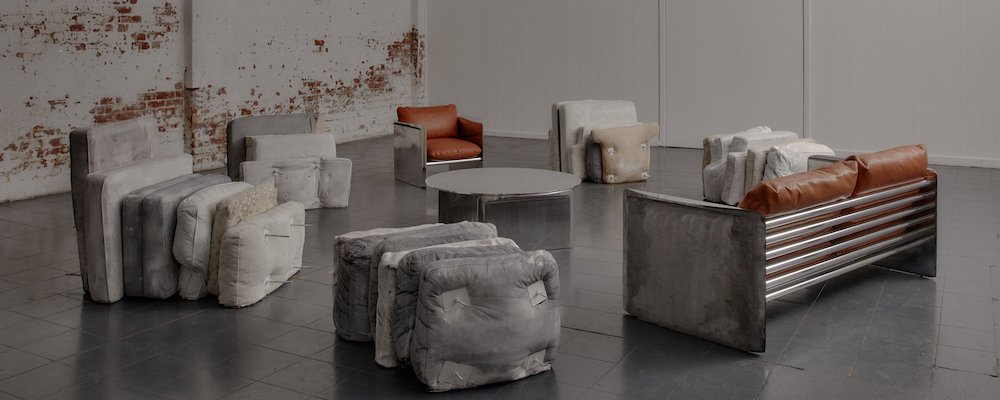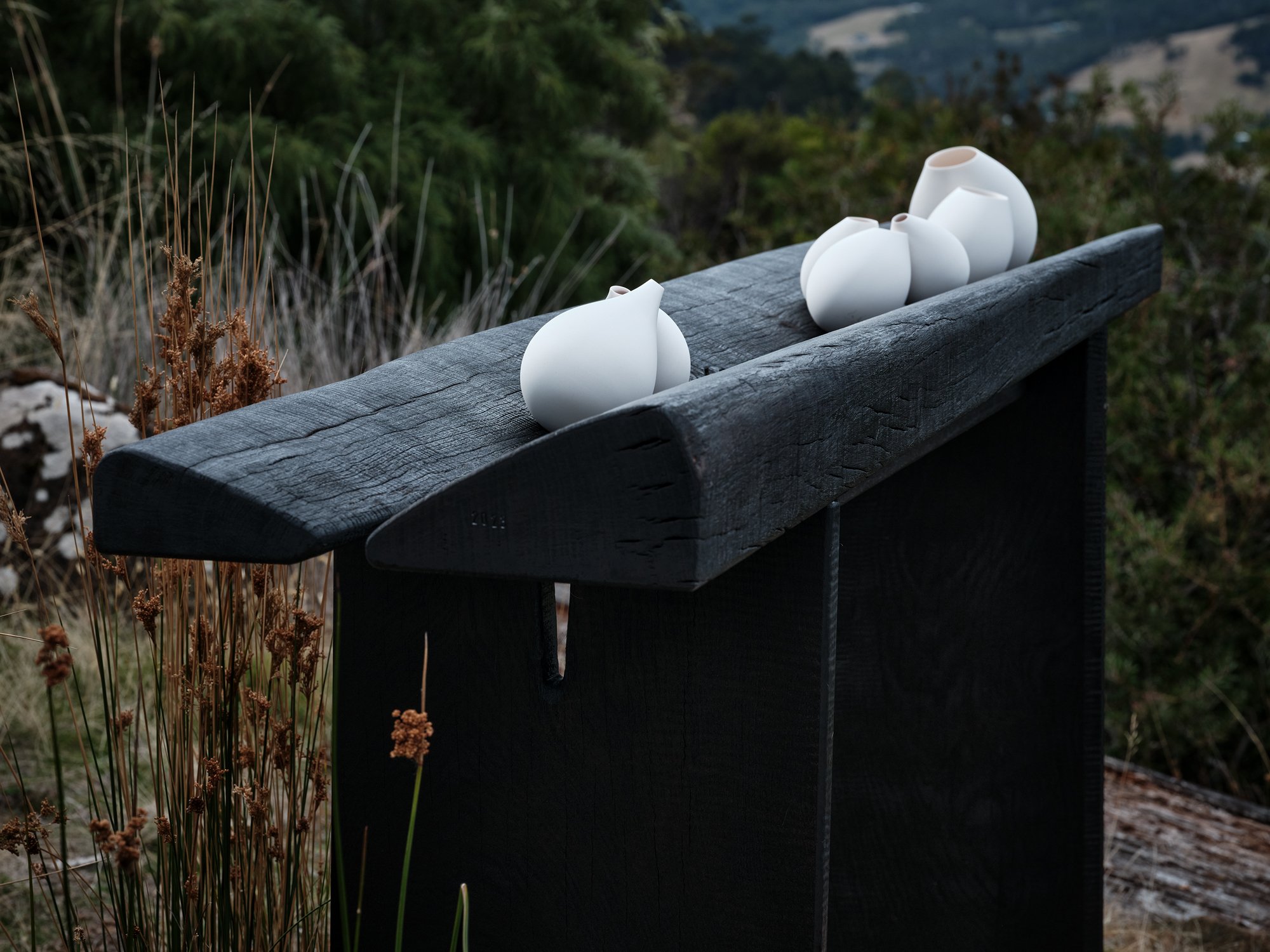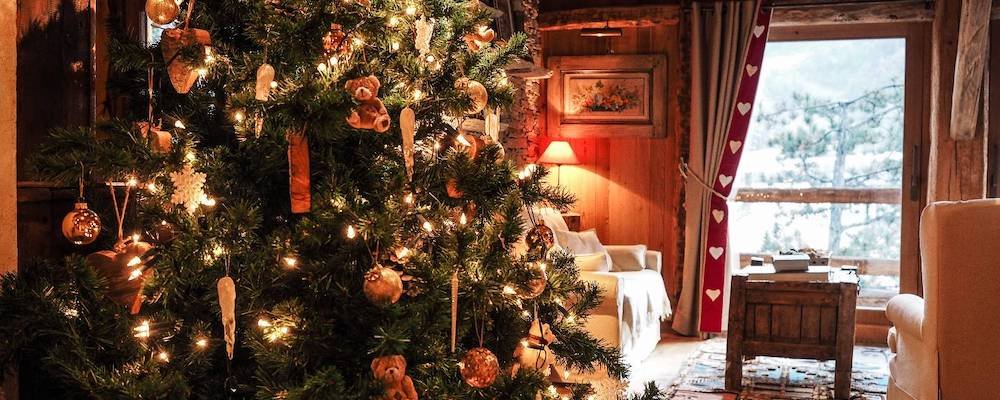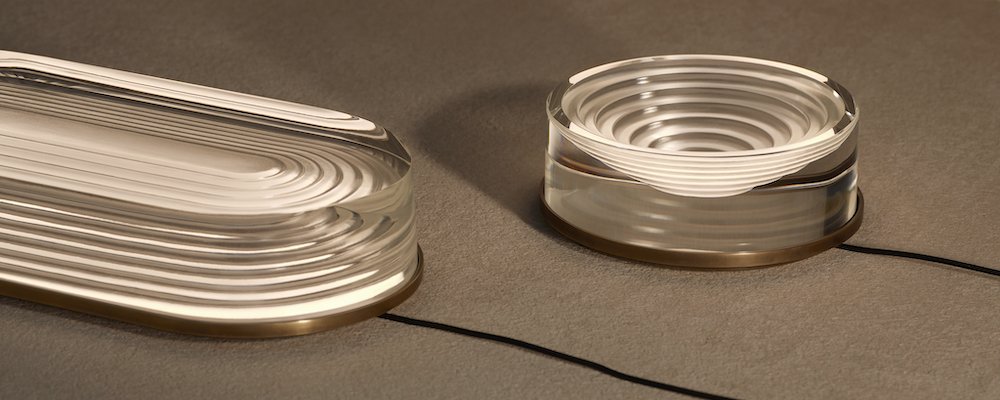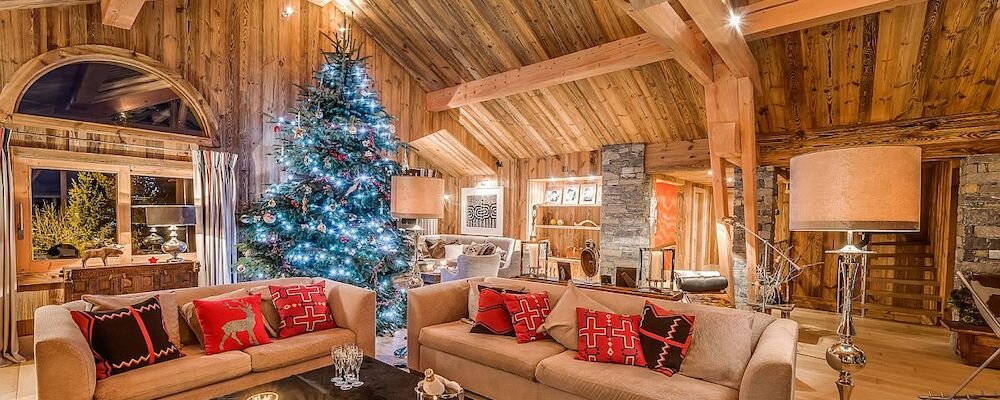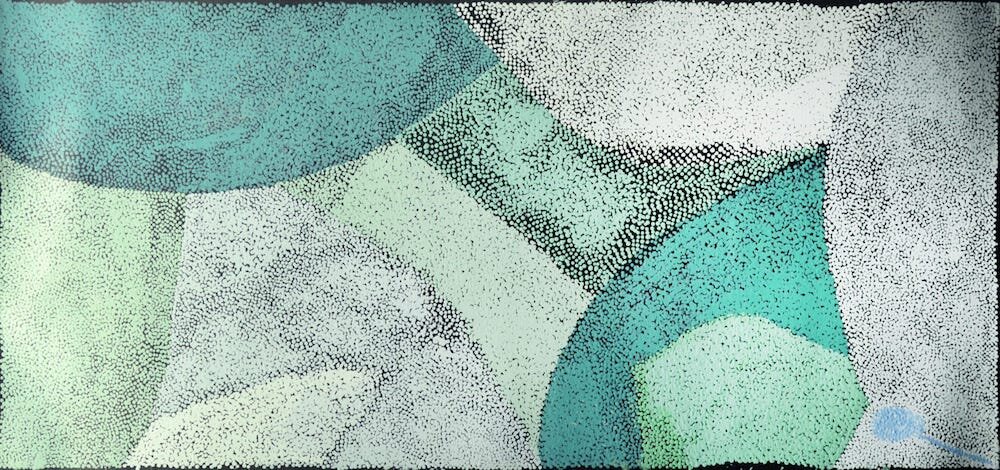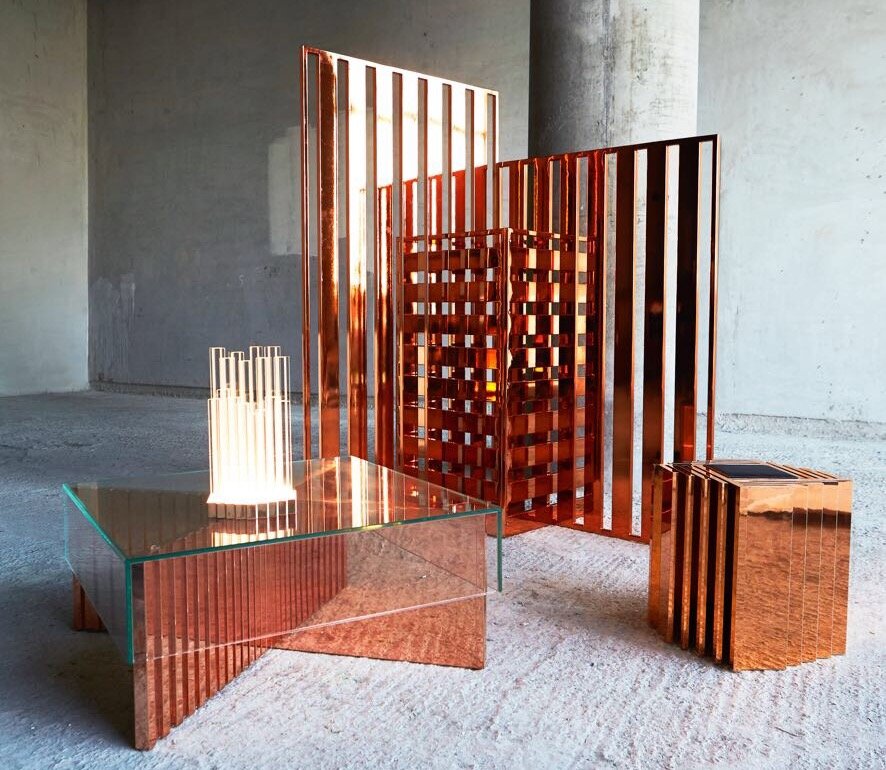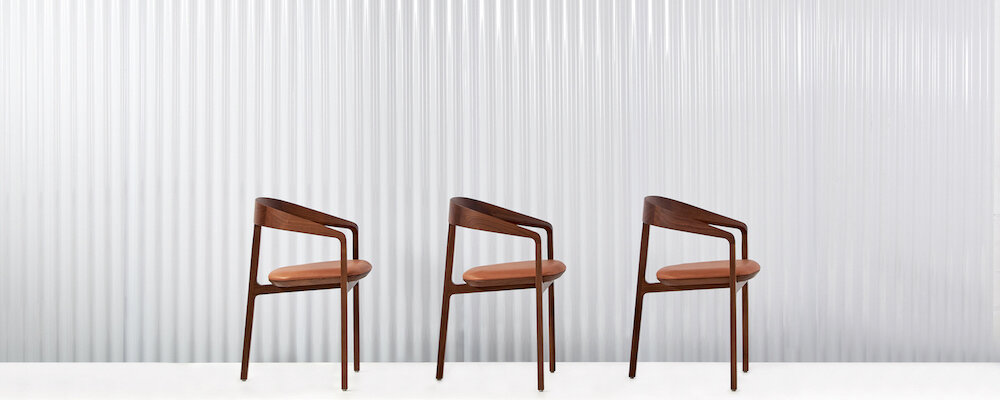Export – Design From Tasmania
Few weeks prior to Melbourne Design Week, ‘Export’ is an exhibition focusing on talents from Tasmania, showing the diversity and wealth of the island.
Organised by Design Tasmania, one of Australia’s leading not-for-profit design organisations dedicated to nurturing creative practice on the isand, ‘Export’ is an evolving exhibition.
The first display was presented during the inaugural Melbourne Design Fair 2022 and a new iteration will return to Melbourne in few weeks.
Whether ceramics formed with earthen materials of the West Coast Range, necklaces of Maireener shells meticulously gathered in Northeast Sea Country, or furniture crafted in the Far South forests from torched Fiddleback Eucalypt: every piece speaks to a deeply special place, and the making it inspires.
The current display include both 2022 and 2023 talents such as
cultural jeweller Lola Greeno
furniture maker Kevin Perkins with sculptor Belinda Winkler
artist/ ceramicist Samantha Dennis
furniture designer/makers Simon Ancher and Matthew Prince
artist/ceramicist Kelly Austin
Tasmanian aboriginal artist and designer Lillian Wheatley
furniture designer/maker Laura McCusker
furniture and object designer/maker Scott van Tuil
field ceramicist Jane Bamford
London-based designer Brodie Neill
Melaleuca #1 (Side Table, 2023)
Melaleuca, from Greek melas black + leuka, feminine of leukos white. Melaleuca #1 alludes to the black of the tin and the white of the quartz at Melaleuca, in the far southwest of Tasmania, drawing parallels between the rolling hills and valleys of the landscape, the ripples in the water, along with the contour feathers and the smooth rounded eggs of the Black Swan.
By Kevin Perkins + Belinda Winkler
Materials: Flamed Fiddleback Eucalypt (shou sugi ban), with 7 Porcelain items Dimensions: L: 1950mm, W: 370mm, H: 980mm
Spatial Object 2 (2022) & Stilled Composition 120, 2023
Kelly Austin’s work is about the simultaneous state of knowing and not-knowing. It is about teetering on an axis between the recognisable and the abstract with the desire to instill wonder and inquisitiveness, and to contribute to the conversation around objects, materials and their perception.
This work is contradictory. It celebrates the tradition and history of making and the relentless dedication to one’s craft, while at the same time pushing against the rigour of efficiency and utility, process and practice. This work is quiet, focused, attentive and nuanced. It creates a space for softness, whilst also exploring the materials of this earth and their transformation: the wetness and heaviness of clay and the solidity of rock faces. It is about being in, and of, landscape: pink sand, turquoise earth, a wall of green against the setting sun’s peach-stained clouds.
by Kelly Austin
Materials: Stoneware, Collected Earthen Materials, Glaze | Stoneware, Collected Earthen Materials, Glaze, Glass, Timber + Acrylic Paint Dimensions: W: 350 mm, H: 50 mm, D: 280 mm | W 180mm, H: 270mm, D: 850mm
*Hero picture: Stilled composition 117
Purralayde, Lutruwitja, Luna necklaces (2023)
Lola Greeno’s practice includes installation, natural fibre basketry and sculptural pieces using Tasmanian bull kelp. However, she is best known for her shell necklaces, an art form she learnt from her palawa Elders in Tasmania. Greeno creates traditional and experimental neck pieces that are celebrated for their unique patterns, sequences and exquisite composition.
The shells are painstakingly collected and treated in an intricate process in order to retain their lustre before threading. Her Elders have traditionally collected more than 21 shell varieties to make the necklaces. Greeno’s works represent her unbroken commitment to the art form, also drawing attention to environmental change that threatens the fragile natural ecosystem.
By Lola Greeno
Each piece is one-of-a-kind.
Materials: Purralyade: Penguin, Maireener, Toothy + Black Crow Shells on beading thread | Lutruwitja: Maireener Shells on beading thread | Luna: Maireener + Black Crow Shells on beading thread
Dimensions: All: L: 1800mm
Mill (2023)
Mill is a dining or occasional chair intended for residential applications.
The distinguishing design language is in the transition from legs to arm rest, a detail that was realised and worked through during the prototyping phase of the design process.
The design intent was to combine ergonomic performance and structural integrity with a simple, elegant presence.
Materials: Tasmanian Oak, Upholstery Dimensions: D: 310mm, W: 1500mm, H:380mm
Scarabaeus
The Scarabaeus set features five new one-of-a-kind iterations of Dennis’ 2019 award winning brooch Pearl Beetle. The works feature the Dung Beetle as subject, rendered in glazed porcelain and sterling silver, with a baroque pearl taking place of the beetle’s usual harvest. In Scarabaeus, the features of specific Dung Beetle species are represented legibly in porcelain to invite discourse regarding the use of exotic species in the Tasmanian agricultural industry. The five species depicted are the types most commonly seen in Tasmania, and which have been reported to have made positive impact in the agricultural industry since their introduction in the 1980s.
Materials: Oxidised Sterling Silver, Porcelain, Glaze, Cultured Pearl Dimensions: L: 25mm, W: 20mm, H: 60mm (approx.)
Dilston Cabinet (2023)
The Dilston has been designed as a smaller version of the popular drinks cabinet that was originally designed for Stillwater Seven luxury accommodation. Large radiused cornered doors enable hinges to be positioned significantly deeper along the side which when opened allow generous access to the offerings held within. Timber sculptural objects are a playful inclusion that encourage a curatorial approach to displaying objects inside.
By Simon Ancher
Materials: Tasmanian Blackwood, Verde Fantastico Marble Dimensions: L: 1300mm, W: 500mm, H: 950mm
Barcode Screen (2022)
First designed, prototyped, refined, remade and exhibited in 2000, Barcode Screen was intended as a piece that was both sculptural and functional. Revisiting this design more than 20 years later, McCusker says is like seeing an old friend again and remembering why you liked them in the first place. Barcode takes as its inspiration something that has become so commonplace as to be almost invisible. Through manipulation of scale, a beauty that otherwise would go unnoticed is made apparent. Useful in a myriad of contexts, the malleable footprint and random assembly of positive and negative throws light and shade with dynamism.
Materials: Tasmanian Oak
Dimensions: L: 2400mm, H: 2100mm with a variable footprint
LOFT Bench (2022)
Launched in 2016, the LOFT collection derives it’s name from the drafting technique used to generate sweeping curves from points on a grid. The form speaks to the place and setting it originates from. Tasmania is an island renowned for its connection with the sea, it’s unique timbers, and it’s ship-building heritage; from the traditional to high performance. The four shells of a LOFT Bench are brought together to create a monocoque structure - an extremely strong structure that derives its strength from the geometry of it’s external skin. A visual lightness is achieved by avoiding the need for any internal structure.
Materials: Australian FSC Hoop Pine Plywood, Walnut Dimensions: L: 2200mm, H: 450mm, W: 450mm
Brink #4 (2023)
Balanced on the brink, a bronze vessel form leans out into the void. Exploring the physical and perceptual aspects of the tension of this point of balance, this work responds to the vulnerability of our fragile Tasmanian environment. Charged with anticipation, Brink #4 creates a space of tension where gravity and precarious balance find a tentative equilibrium.
Materials: Cast Bronze, Steel
Dimensions: L: 300mm, H: 1650mm, W: 300mm
Derwent River Ascidian Bottles (2019)
The Spotted Handfish (Brachionichthys hirsutus), which inhabits the Derwent River, Tasmania, is critically endangered due to reduction of its preferential spawning habitat, the Stalked Ascidian (Sycozoa pulchra). In 2018, in collaboration with the CSIRO, Bamford designed and handcrafted 3,000 ceramic Artificial Spawning Habitats (ASH) to replace plastic ASH. The ceramic ASH was SCUBA deployed into the Derwent River to provide support for the Handfish’s hauntingly gorgeous spawning dance. In September the first wild spawning around ceramic ASH occurred. While deploying ASH, divers found various old glass bottles, thrown overboard in the past by yacht owners, resting on the seafloor. These bottles had, over time, grown algae and become important habitat for fish. Unlike plastic, glass does not pollute, and is high in silica, like clay.
These Ascidian Bottles have a conceptual framework with these two stories in mind. Combining two forms, stalked ascidian and bottle, they explore a new way of working in clay that references ecological work in clay habitat ecology. Bamford has crafted this story by coiling porcelain ‘ascidians’ into bottles.
By Jane Bamford
Materials: Southern Ice Porcelain Dimensions: various
Rikawa + River Reed (2022)
Rikawa (Kelp) was traditionally used to make water carriers, while river reed was used to create basketry. These were hand-woven by Tasmania’s eldest generations, skills of which have been passed down through palawa and pakana culture.
Learning these traditional weaving skills from her aunties, Rikawa and River Reed explore contemporary expressions of these versatile mediums, sourced sustainably from Lillian’s traditional homelands in North East Tasmania. They are expressive of Wheatley’s long relationship with these cultural materials, gathered and made on country.
Continuing the intergenerational transference of knowledge between Wheatley and her daughter Nindarra Wheatley, River Reed is a collaborative piece between Ningi (mother) and Niyanta (daughter).
By Lillian Wheatley
Materials: rikawa (kelp) | river reed, seasonally harvested Dimensions: H: 1500mm, W: 700mm (approx.)
ReCoil (2021)
ReCoil is an elliptical centrepiece dining table. It is made entirely of precious, reclaimed Hydrowood timber veneer offcuts, with six native Tasmanian tree species featured. These include Huon Pine, Tasmanian Oak, Celery Top Pine, Sassafras, Myrtle and Blackwood. The veneers are meticulously coiled by hand in outward spirals, referencing the trees’ annual growth rings. The effect is a spectrum of wood tones, from the burnt umber of the Tasmanian Oak to the honeyed hue of the Huon Pine, which is the rarest and most treasured of all Tasmanian timbers.
The actual colour combinations and sequence of the veneers is randomised into a blueprint consisting of all the species and their many lengths of scraps. The resulting combinations of the veneers mesmerise, demanding attention. The various timbers release unique oils: of particular notice is the scented Huon Pine. The tabletop has been CNC-trimmed smooth, flush cut. The surface is polished, finished with resin and the table stem is made of larger pieces of veneer. The impact of ReCoil comes from its refined, innovative process and positive message.
By Brodie Neill
Materials: Veneer: Huon Pine, Tasmanian Oak, Celery Top Pine, Sassafras, Myrtle and Blackwood Dimensions: L: 2200mm, H: 780mm, W: 1400mm
‘Export’ at Design Tasmania: April 01 - May 28, 2023


















